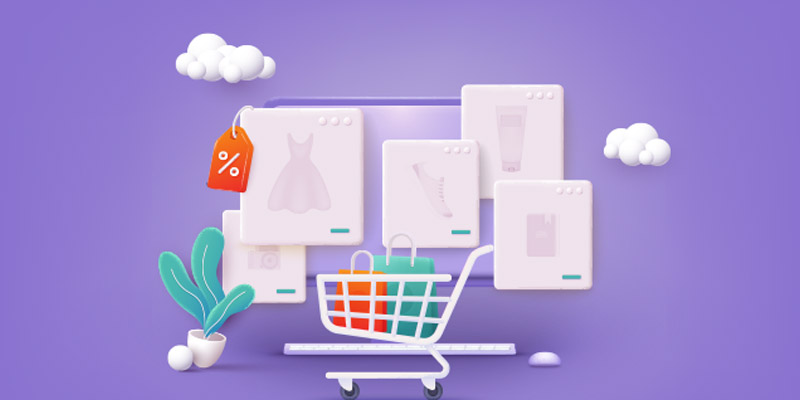The Ultimate Guide To Building An Ecommerce Store From Scratch

Feature Image Source: Freepik.com/bsk1d
Ecommerce is expected to grow in the future. It is a good idea for businesses to get into the industry and build a recognizable brand too. Many people today prefer to buy products online or book a service via an app or website. There is a large audience that is located across digital mediums. With an ecommerce store, you can promote your product or services to more consumers and expand the business quickly too. Now, this can be slightly challenging as the competition in the digital world is very tough. You need to stand out from the beginning with an impressive website, social media presence and branding elements.
What to Know for Ecommerce
Before you get started with your ecommerce store, you need to work on visual design for creating awareness and recognition. This includes elements that a user interacts with on the website. They can play an important role in attracting visitors to the ecommerce store. For instance, the logo is usually the first thing that people are likely to see. It could give them an idea of your niche and expertise immediately. If you are yet to design one, you can launch a brand logo contest and pick a relevant icon to represent the business.
Once you have decided on how you want the audience to perceive and think about your brand, it becomes easier to create a platform that generates high revenue and sales. To make this easier for you, here is the ultimate guide to building an ecommerce store from scratch.
The Ultimate Guide to Creating an Ecommerce Store
When you are looking to build your ecommerce store, there are quite a few factors that you need to keep in mind. From the layout of the website to marketing the products or services, it’s essential for business owners to brainstorm ideas that can help send the right message. Let’s take a look at some of the key steps that you need to follow to create an ecommerce store from scratch.
– Identify Your Main Product

This is one of the first things business owners should pay attention to before launching a website. You should identify a bestselling or main product to pitch to potential customers. For instance, current trends show that books or accessories are quite popular in the ecommerce world.
According to a report by Shopify, the market for books saw impressive growth during 2021 and generated a revenue of $27.5 billion globally. Here are some other top products that you can sell online easily:
- Scented Candles
- Shapewear
- Mobile Accessories
- LED Lights
- Clothing Items
- Home Decor
- Wallets
- Smart Watches
- Eyeliner
- Hair Accessories
Pick a product that is relevant in the industry and can attract potential customers. Think of this as a unique factor that could convince people to pick your ecommerce store over the competitors. Highlight what makes your online business different from the others in your industry. People today have a lot of choices in the market so they might just keep browsing instead of making a purchase.
By promoting a solution or a product that might not be available anywhere else, you might find it easier to attract high traffic to your online store and convert more leads too. So right from the beginning, identify one or two items that can generate interest within visitors from the first look. Now, you might be selling a similar product or service as some of your competitors. In such a situation, it’s a good idea to draw focus to certain features that make it unique.
– Reach out to Your Target Audience

To boost sales and keep the visitors coming to the ecommerce store, it’s important to locate and connect with the target audience. This is where you need to work on an effective marketing and branding strategy. People who are looking for specific products or services may want to know why they should be choosing your business or platform over any other option.
According to a report, almost 56 percent of consumers in the United States prefer to shop online. It’s why ecommerce sales have increased by billions in a few years.
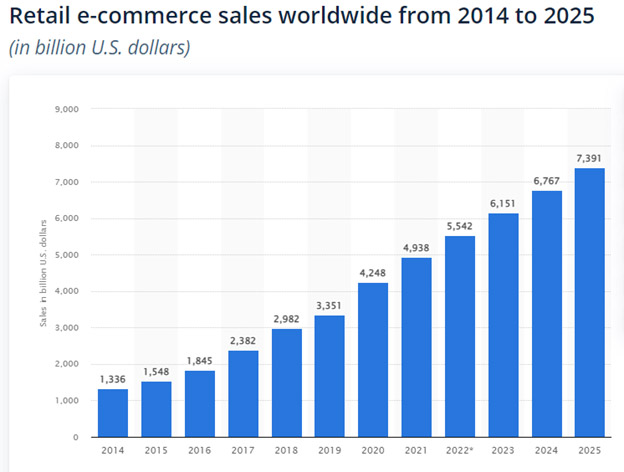
Image Source: Statista
As a business owner, you need to gain their trust and encourage them to check out the products or services that you have to offer. In the beginning, you need to find out where the target audience exists and pitch your ecommerce store to them effectively. It is a good idea to focus on one or two places where most of the audience is located.
For instance, if you are selling athletic products or sportswear, you should create a presence on social media networks and connect with bloggers in the industry. Many people between 18 to 35 years of age actively search for sports brands or fitness wear on social media platforms such as Instagram and Facebook.
This means that a majority of your customer base will be found across such mediums. So, start running sponsored ads and collaborate with micro-influencers to increase your following and create awareness. People also do a lot of research before making a purchase. You can attract their attention by producing relevant content that ranks highly in search engine results.
– Make Your Web Design Interactive

It is one of the most important factors to consider when building an ecommerce store from scratch. Once you have identified what you are selling and found your target audience, you need to pay attention to the web design for the ecommerce store. When people are interested in what you are selling, they may search for the website to get more information or make a purchasing decision. With an interactive web design, you can keep them on the page for a longer time and make a good impression too.
If you are looking to create an impressive website, you can work with a professional or look for a CMS like WordPress or Shopify. These are highly popular in the ecommerce industry and allow business owners to provide a smooth user experience to visitors as well. It is essential for you to add or include features that convey the information clearly and tell people about the brand instantly. With relevant colors, bold typography and high-quality visuals or imagery, you can engage potential customers in a short time.
You should also keep in mind that the website needs to be responsive. So, the layout and web design should work well with mobile devices and maintain its speed and image quality for different screen resolutions. When it comes to interactive web design, you can take the example of Brooklinen. The website has soothing colors and appealing imagery that immediately convinces the visitor to scroll down.
Similarly, Retro Supply is also another ecommerce store that managed to get people interested in digital products. The web design is user-friendly and reflects the brand closely. You can take inspiration for your web design and start building your ecommerce store.
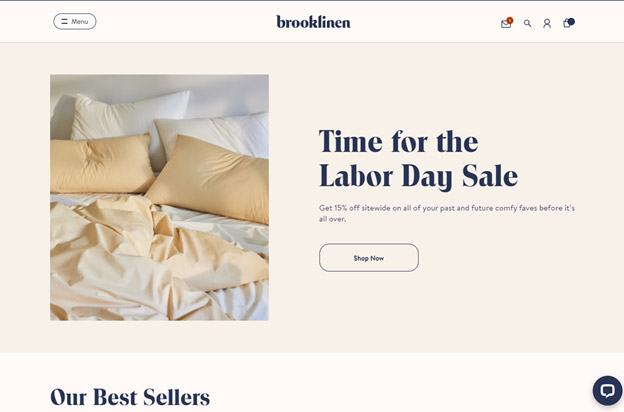
Image Source: brooklinen.com
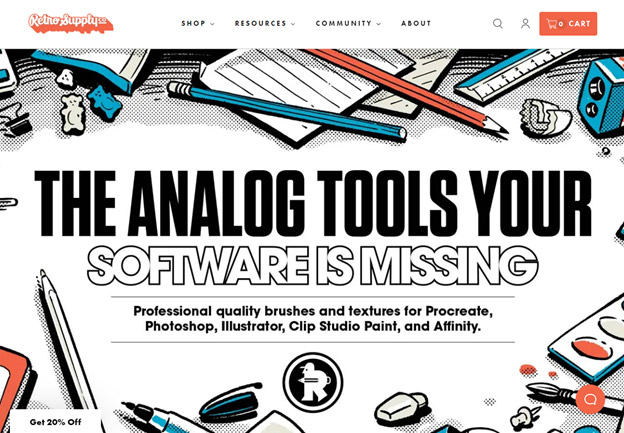
Image Source: retrosupply.co
– Smooth Checkout and Payment Options

You might be surprised to know how many people leave a website or ecommerce platform that does not have multiple payment options or an easy checkout. When you are creating one, it is essential to keep the process short and ask for less information. Many visitors may not want to include a lot of details and could leave the page if they are required. Keep the checkout form short and get only the contact information so you can grow your email list and reach out to customers later on too.
To encourage people to return and build loyal customers, it’s a good idea to include all the payment options that are supported. Other than the VISA or Mastercard, you should add Venmo or Zelle and Apple Pay as well. This could give you an advantage over competitors with limited payment choices. People may prefer to make a purchase from your ecommerce store that allows them to checkout smoothly and process the payment immediately.
Some popular payment gateways that help businesses with a smooth process on their ecommerce platforms include:
- Skrill
- Amazon Pay
- PayPal
- 2Checkout
- Square
It is a good way to establish credibility in the market and boost recognition as well. Consumers might also recommend or promote your website to their followers, friends or family based on their user experience.
– Multiple Product Images

In ecommerce, people can only look at different products online and make their decision according to what they can see. Since they cannot view an item in person or visit a physical store, most people rely on images or photos. This is one of the first things that visitors look for in an ecommerce store. The product pictures or catalog can tell them everything they may need to know. To make a good impression on first-time customers, it is important for you to add high-quality and multiple images of each product.
This way, people can easily figure out if it can help solve a problem for them and how it works as well. Include various angles that highlight the features of all the items clearly. It allows visitors to get a closer look and make the right decision. When adding the pictures to the ecommerce store, make sure that they are compressed and do not slow down the loading speed. You can also have a large header image or sliders on the home page to give people an idea of your expertise and niche.
For the products, you can add multiple pictures that make it look appealing. Take the example of Andar which specializes in wallets. The product landing pages are designed to draw attention to images that show the color, features and available options clearly. This can help convince people to make a purchase right away and add the product to the cart before leaving the ecommerce store.
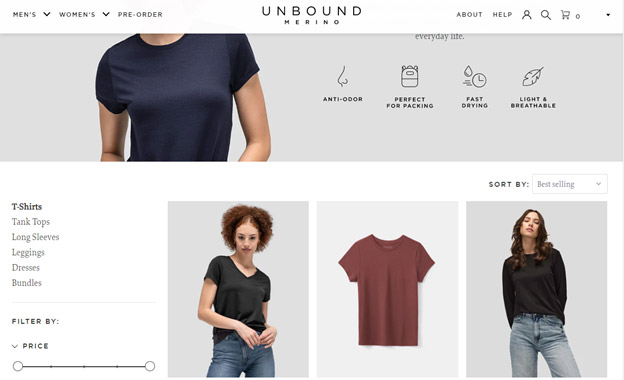
Image Source: unboundmerino.com
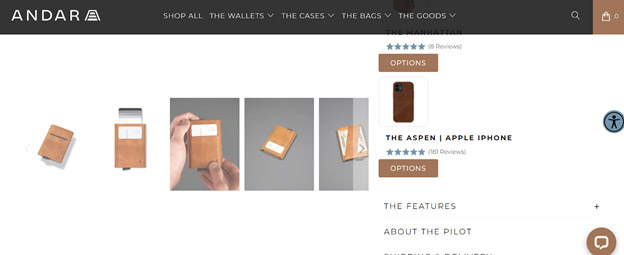
Image Source: andar.com
– Start Marketing and Promoting Your Platform

In the end, no matter how well-designed or attractive your ecommerce website is, if people are not aware of it, you may not be able to generate high sales. With an impressive marketing strategy or promotional campaign, you can create familiarity within the audience. The ecommerce store or platform is at the center of the strategy and you need to focus on increasing its visibility before anything else. If you think about it, there are billions of people searching for products or services on the internet.
Here are a few factors to keep in mind for a successful marketing and promotional strategy:
- To bring potential customers to your page, you need to rank among the first-page search results of a search engine like Google. This can happen with search engine optimization techniques.
- Include relevant keywords in website content and create a blog that offers tips or tricks and unique insights on a trending topic in your industry.
- Get quality backlinks from authority websites or bloggers through guest posts to boost organic traffic to your ecommerce store.
- In the beginning, you can leverage social media networks to market your ecommerce platform to the target audience. This could help you build a long email list as well.
Once you have a few people interested in your products, you can work on email campaigns to send them updates and the latest discounts or holiday offers. Add lead magnets or pop-ups to the ecommerce store to encourage people to subscribe or sign-up.
Tools for Tracking Ecommerce Sales and Conversions
Once you have created your ecommerce store, you need to focus on using tools that can help you track its progress regularly. This way, you can make improvements to the web design or products to engage a wider audience and expand your business in a short time. Today, there is a range of tools that can help business owners track the performance of their websites and marketing results as well. You can easily use software or analytical tools to create awareness and recognition to convert higher leads.
These are a few options that you can consider to monitor your ecommerce store and track your goals in real-time.
- Google Analytics- Track the visitors on your website and get insights daily on how you can improve traffic.
- MailChimp- Use templates for email campaigns and send automated messages to the email list.
- Hootsuite-Manage social media accounts on Facebook, Twitter, Instagram and LinkedIn. Track engagements and send updates regularly.
- Sumo-It is great for email marketing and helps businesses generate and convert leads. The tool is designed to boost website growth.
- OptinMonster-It can help you increase sales and grow your email lists with more subscriptions.
- SurveyMonkey-Get feedback from visitors on the website and generate surveys or quizzes to boost engagement.
- Semrush-Helps with search engine optimization. You can research the most popular and trending keywords to create valuable content.
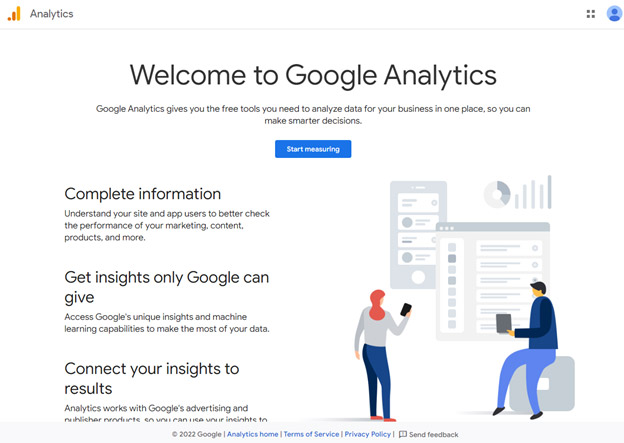
Image Source: Googleanalytics.com
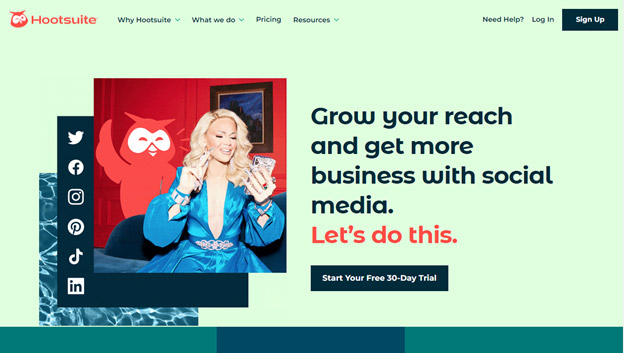
Image Source: Hootsuite
The tools above are highly useful for getting insights or daily reports on traffic and conversion. You can even find out which CTA (call-to-action) is generating the best results on the landing or home page. Google Analytics is a great tool for tracking how much time a visitor is spending on the website and what factors are affecting the bounce rate. Other than that, you can also pick social media and email marketing tools to track the results of your promotional campaigns. They can give you a clear idea of visuals or content that works well and brings people over to the ecommerce store. Also you can compare Omnisend against Klaviyo email marketing tool for the best choice.
Wrapping Up
This is our ultimate guide to building an ecommerce store from scratch. You can follow the steps given here to create one and establish a name in the industry. Create a recognizable brand by designing a memorable and timeless logo that builds a positive perception of the business in the minds of the audience. Make sure that it’s prominent on the ecommerce platform and can convince people to check out the products or services. Similarly, the website also has to be modern and up to date so that people can easily find what they are looking for.

